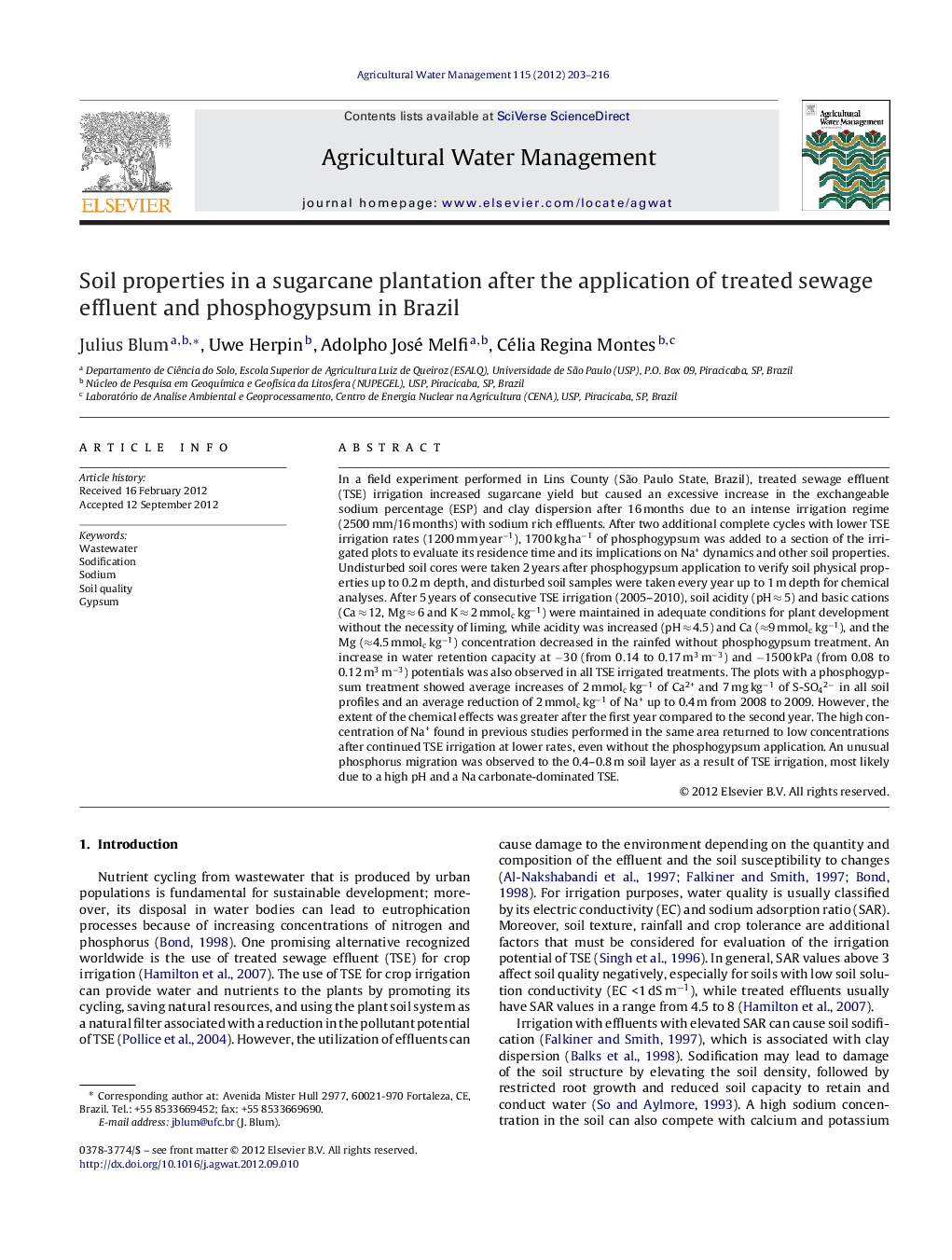| کد مقاله | کد نشریه | سال انتشار | مقاله انگلیسی | نسخه تمام متن |
|---|---|---|---|---|
| 4479065 | 1622964 | 2012 | 14 صفحه PDF | دانلود رایگان |

In a field experiment performed in Lins County (São Paulo State, Brazil), treated sewage effluent (TSE) irrigation increased sugarcane yield but caused an excessive increase in the exchangeable sodium percentage (ESP) and clay dispersion after 16 months due to an intense irrigation regime (2500 mm/16 months) with sodium rich effluents. After two additional complete cycles with lower TSE irrigation rates (1200 mm year−1), 1700 kg ha−1 of phosphogypsum was added to a section of the irrigated plots to evaluate its residence time and its implications on Na+ dynamics and other soil properties. Undisturbed soil cores were taken 2 years after phosphogypsum application to verify soil physical properties up to 0.2 m depth, and disturbed soil samples were taken every year up to 1 m depth for chemical analyses. After 5 years of consecutive TSE irrigation (2005–2010), soil acidity (pH ≈ 5) and basic cations (Ca ≈ 12, Mg ≈ 6 and K ≈ 2 mmolc kg−1) were maintained in adequate conditions for plant development without the necessity of liming, while acidity was increased (pH ≈ 4.5) and Ca (≈9 mmolc kg−1), and the Mg (≈4.5 mmolc kg−1) concentration decreased in the rainfed without phosphogypsum treatment. An increase in water retention capacity at −30 (from 0.14 to 0.17 m3 m−3) and −1500 kPa (from 0.08 to 0.12 m3 m−3) potentials was also observed in all TSE irrigated treatments. The plots with a phosphogypsum treatment showed average increases of 2 mmolc kg−1 of Ca2+ and 7 mg kg−1 of S-SO42− in all soil profiles and an average reduction of 2 mmolc kg−1 of Na+ up to 0.4 m from 2008 to 2009. However, the extent of the chemical effects was greater after the first year compared to the second year. The high concentration of Na+ found in previous studies performed in the same area returned to low concentrations after continued TSE irrigation at lower rates, even without the phosphogypsum application. An unusual phosphorus migration was observed to the 0.4–0.8 m soil layer as a result of TSE irrigation, most likely due to a high pH and a Na carbonate-dominated TSE.
► Treated sewage effluent maintained adequate soil acidity and basic cations for plants.
► Phosphogypsum increased Ca2+ and S-SO42− up to 1 m and reduced Na+ up to 0.4 m depth.
► Chemical effects of phosphogypsum were greater after 1 year after its application.
► Soil physical soil properties were not affected by phosphogypsum application.
► Well-drained soils with a rainy season resulted in longer term feasibility of TSE use.
Journal: Agricultural Water Management - Volume 115, December 2012, Pages 203–216